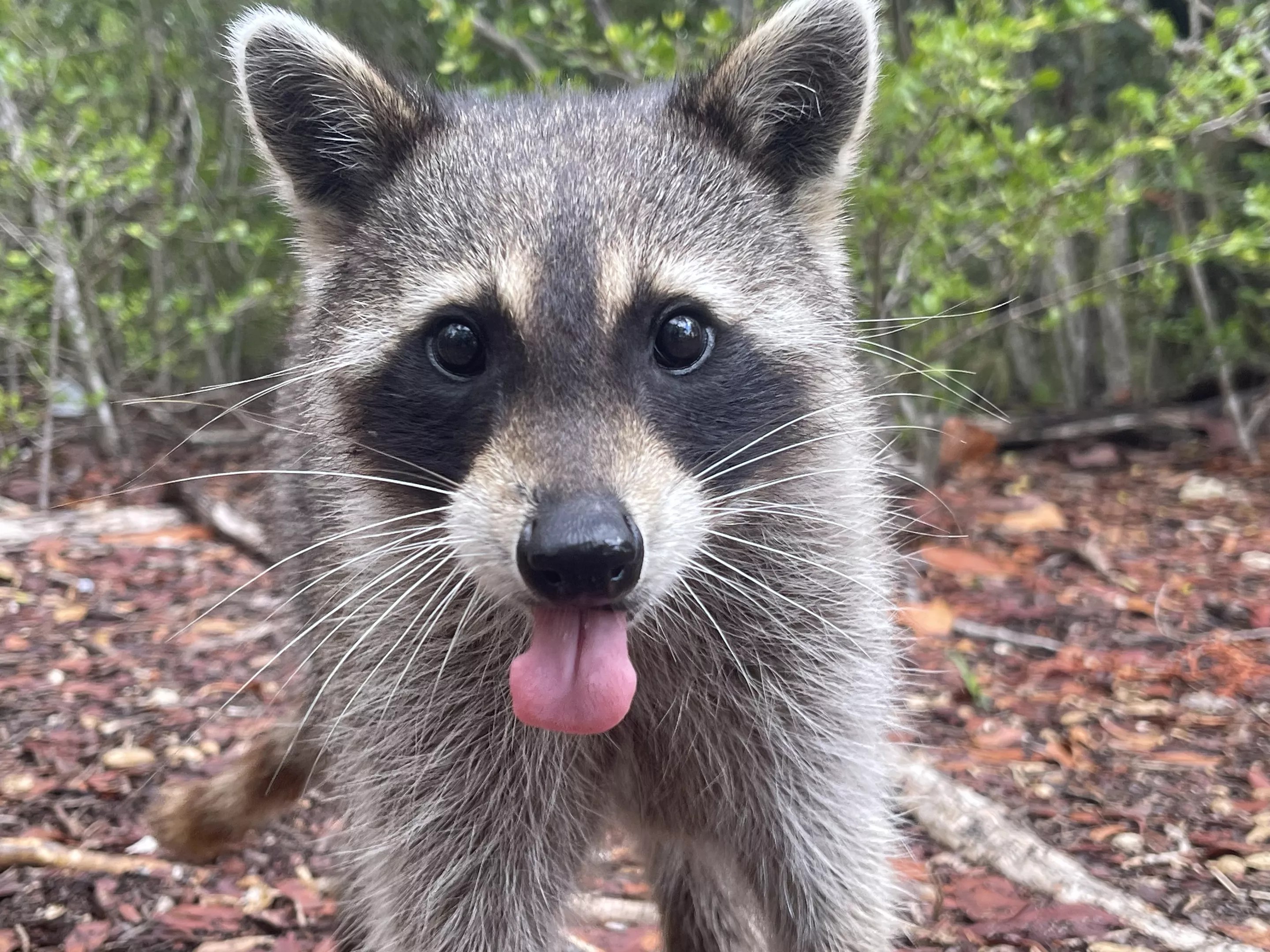
Photo by B. Scott McLendon

Audio By Carbonatix
Tucked away in the far northern reach of Biscayne Bay is an island shrouded in mystery.
The 15-acre spoil island – formed from dredged bay sediment in the 1970s – has undergone several evolutions. Originally dubbed Sandspur Island, it was later nicknamed Beercan Island, thanks to the many empty cans and other mementos beachgoers left behind.
At some point, the island earned a new moniker: Raccoon Island. No one is sure when the transition happened, but “Beercan Island” sounds like an open invitation for scavenging wildlife to move in.
So, why is the island inhabited by a gaze of small, friendly raccoons?
Will you step up to support New Times this year?
At New Times, we’re small and scrappy — and we make the most of every dollar from our supporters. Right now, we’re $16,750 away from reaching our December 31 goal of $30,000. If you’ve ever learned something new, stayed informed, or felt more connected because of New Times, now’s the time to give back.
How did the furry bandits steal away to this island retreat in the first place?
Are people really shelling out $90 to $500 for a chance to visit and hand-feed raccoons?
Will the Bal Harbour Ritz-Carlton one day advertise “sweeping views of trash panda paradise”?
Some of these mysteries may never be solved. But one thing is certain: One wrong move-human or raccoon-could prompt a government-led roundup or eradication of this unusual raccoon haven, a wildlife expert tells New Times.
Though the island has been part of dockside lore for years, no publication had written about Raccoon Island-until now, says Angely Bernard of SoFlo Water Adventures LLC, a local tour operator offering boating and kayaking excursions to the site.
Bernard is often the first person you’ll meet if you buy a $90 tour, which we highly recommend. It’s one of the only ways to get to the island, unless you have your own vessel.
An air of exploration naturally surrounds any dock filled with sea-worthy vessels. But the sight of a heavily bearded man captaining a boat festooned with tiki heads makes the Bill Bird Marina feel like an exotic seaport far away from urban sprawl.
Our tiki boat skipper, Captain Drip, took first shift as guide to the critters of Raccoon Island. The short trip teemed with island-infused reggaeton and views of the north Miami skyline we’d soon forget under a canopy of red mangroves.
“It will feel like a scene out of Jurassic Park, but you won’t get eaten by a megalodon,” Captain Drip quips.
Drip dropped the tour group off with our island guide, a young man named Tony. His flowing, Australian-style mullet, calf-sized anchor tattoo, and trademark Florida bare feet immediately reassured me that our tour group would be safe in the wild.
A few minutes after a short kayaking tutorial, a ceiling of winding mangrove branches enclosed us. The thin limbs wove an intricate tapestry of foliage above the shallow waters we paddled through. Their exposed root systems seemed to sprawl with the same inconsistency, like curling fingers inviting you further into the wilderness.
The water was just a few feet deep, and the route through the tarpon tidal pool is a stone’s throw from the Florida International University campus. But rowing through the dense mangrove forest felt like a tranquil ride through prehistoric growth – completely unsullied by man’s constructs.
Sightings of mangrove tree crabs, manatees, tarpons, sea turtles, and all manner of aquatic and semi-aquatic wildlife are common here, but the stars of the trip are a bit farther away.
Most people kayak or swim to Raccoon Island because Miami-Dade County prohibits mooring to any publicly-owned bank or shore (unless the boater has a lease of permit issued by the county).
Halfway through our three-hour tour, our trek toward Raccoon Island finally began. The illusion of remote wilderness faded, and Miami came back into clearer view: spotless yachts and vessels seemingly held together with rope knots and hope.
But the magic quickly resumed once we landed on the shores of Raccoon Island.
Here, one might meet characters like the two one-eyed mamas, the nearly fingerless grandma, and the rarely seen, salty, one-armed “Tripod,” Bernard tells New Times.
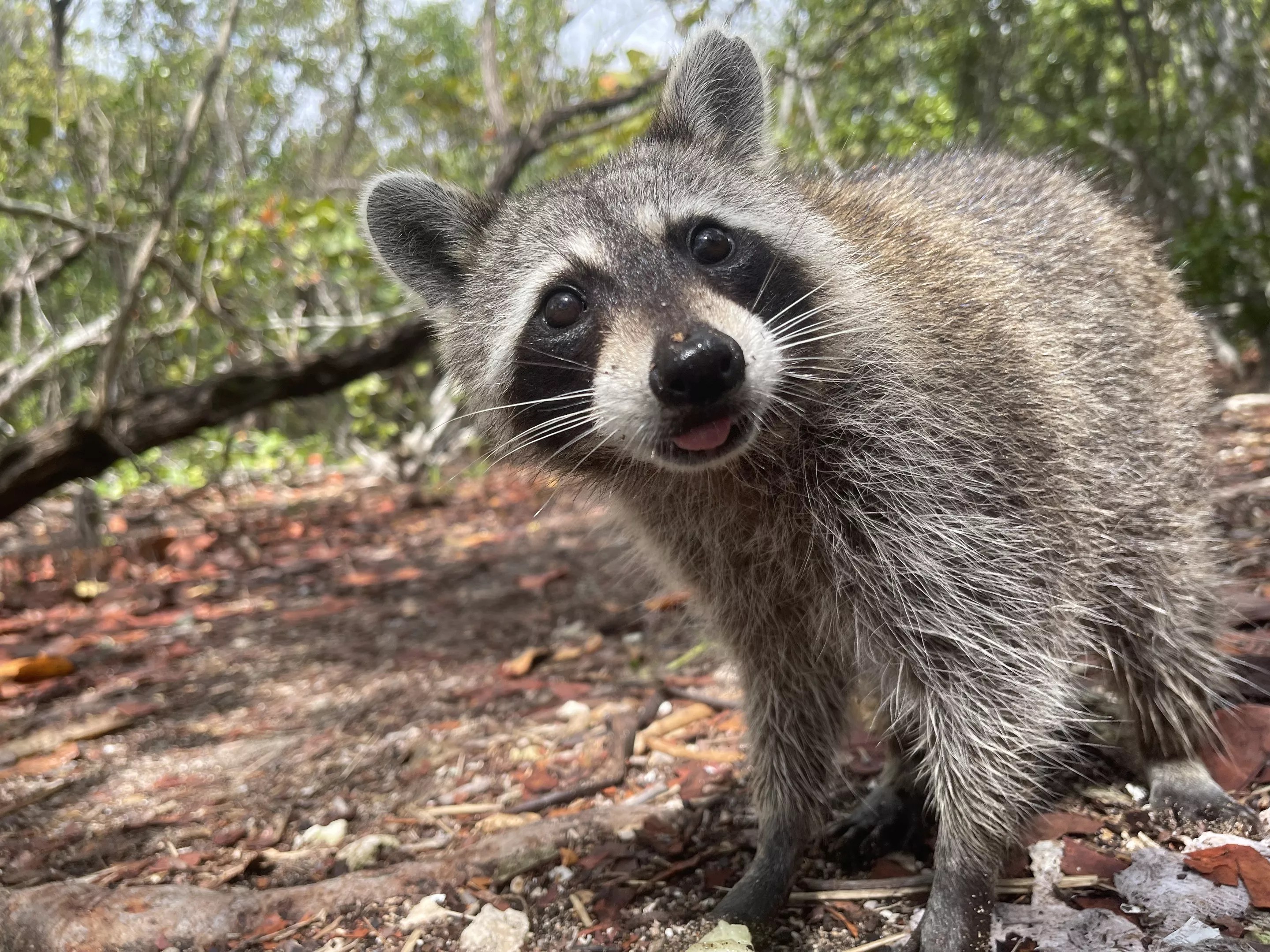
A polite raccoon stares at the camera on Raccoon Island. The island stars aren’t camera-shy.
Photo by B. Scott McLendon
Our guide armed us with slices of honeydew melon and tips for where to find the little thumbed critters. While feeding the animals is the main objective of the trip that hundreds have booked, biologist and professor William H. Kern tells New Times that it’s actually very much illegal.
But breaking the law (and the accompanying $100 fine on the first offense) isn’t even the worst part. Feeding them presents a trickle-down danger, Kern warns.
“With this large population and unnatural feeding bringing the whole population together, any introduced disease will wipe out the population,” Kern tells New Times.
If one contracts diseases like rabies, distemper, or other pathogens or parasites, it would spread through and kill the whole population quickly, he explains.
Then another, perhaps more immediate danger, considering how many people visit the island:
“Raccoons fed by people lose their fear of humans and can become aggressive and may bite people who don’t have the food they expect to receive,” Kern tells New Times. “If the offending animal is not killed and tested, the Florida Fish and Wildlife Conservation Commission (FWC) may have to trap, euthanize, and test every raccoon on the island.”
Just one bite, which tour guides say has never happened, could sound the death knell for the island’s furry residents, which tour guides estimate to number around 40.
That fact is likely little known among the tourists who flock to the island to give the raccoons a sweet treat.
They went unseen during the first 15 minutes of our excursion into their territory. Bernard warned us, “They come out when they want to come out,” after all.
The raccoons ‘ alcove is a short walk away along a well-beaten path winding through a shallow creek and under the stretching limbs of more mangroves.
Once we began to wander off the path, we spotted rinds of previous melon scores and heard leaves shuffling.
“There’s one!” a tour group member exclaimed, pointing to the tail of a small raccoon traipsing away from our group about 50 yards away.
Another tourist joked that the raccoons had outsmarted us.
“Oh, they’re definitely watching us,” another said before we looked up.
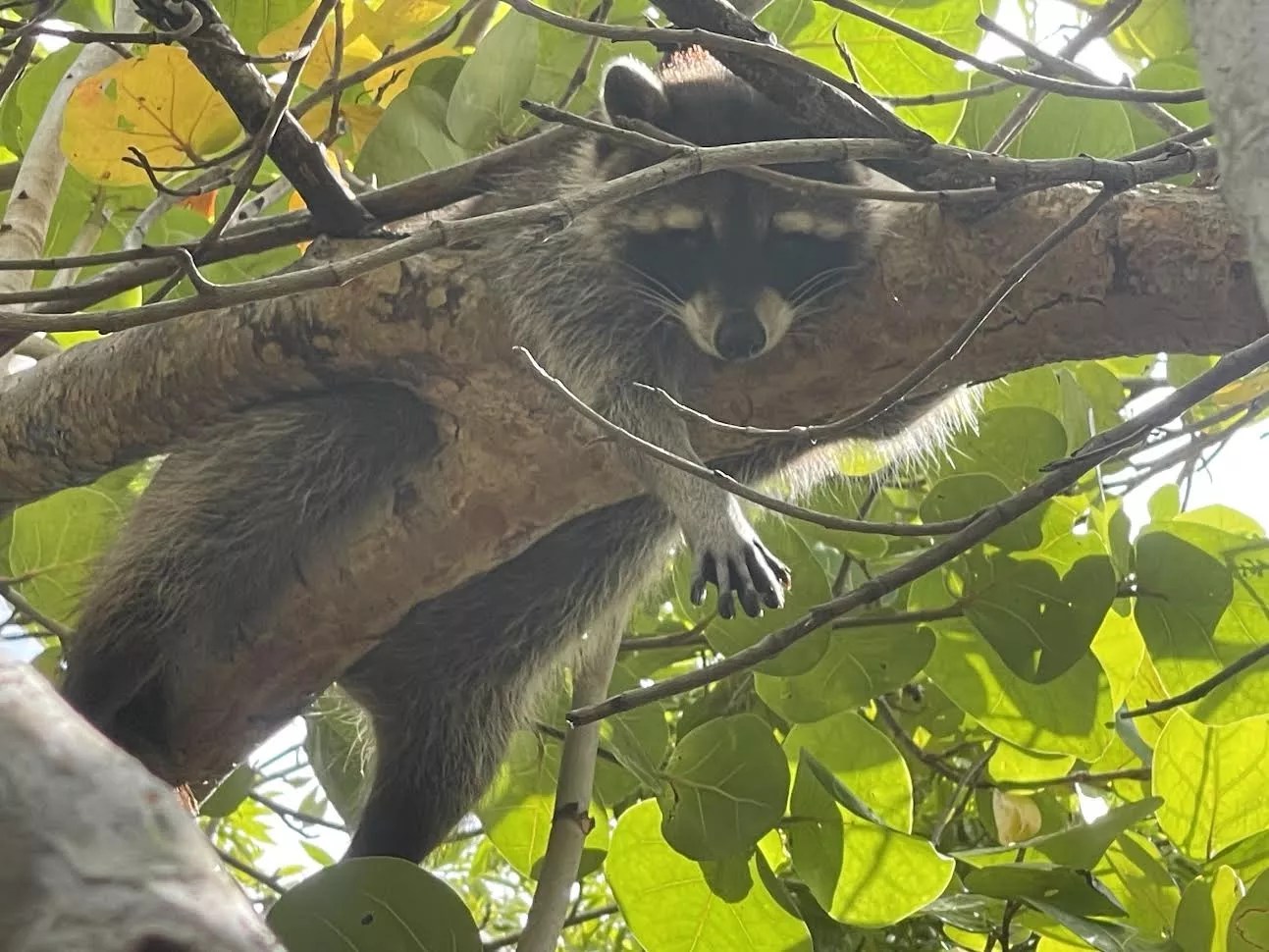
A raccoon lounges in a tree on Raccoon Island.
Photo by B. Scott McLendon
Our first raccoon sighting lounged carelessly in his high-rise tree-limb loft 20 feet above our heads, utterly uninterested in the fruit offerings of peasants on the ground.
His neighbors, however, began crawling out of the jungle. They traded four legs for two and began panhandling for fruit.
“They’re well-fed,” Tony said.
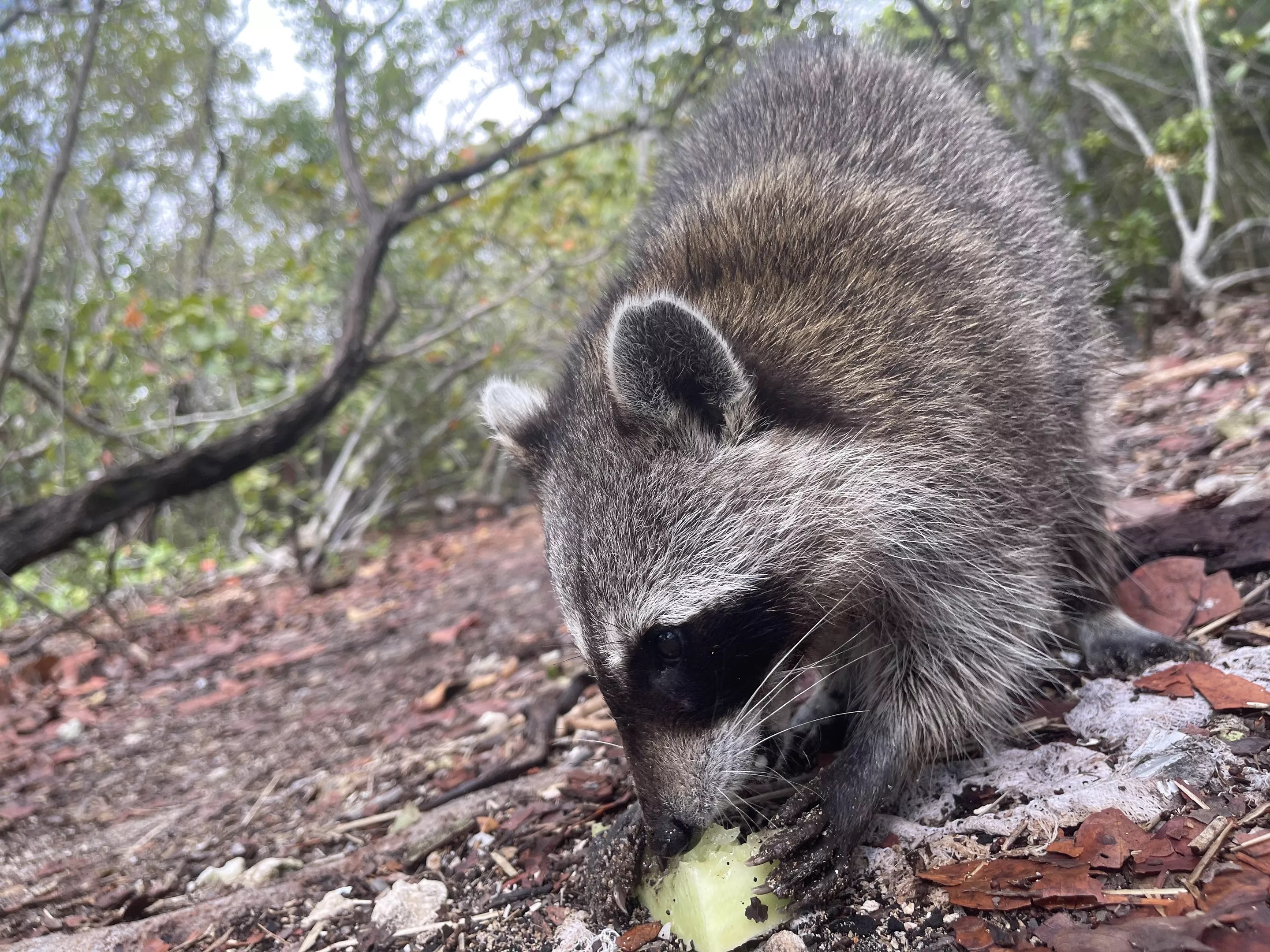
A raccoon snacks on honeydew melon on Raccoon Island.
Photo by B. Scott McLendon
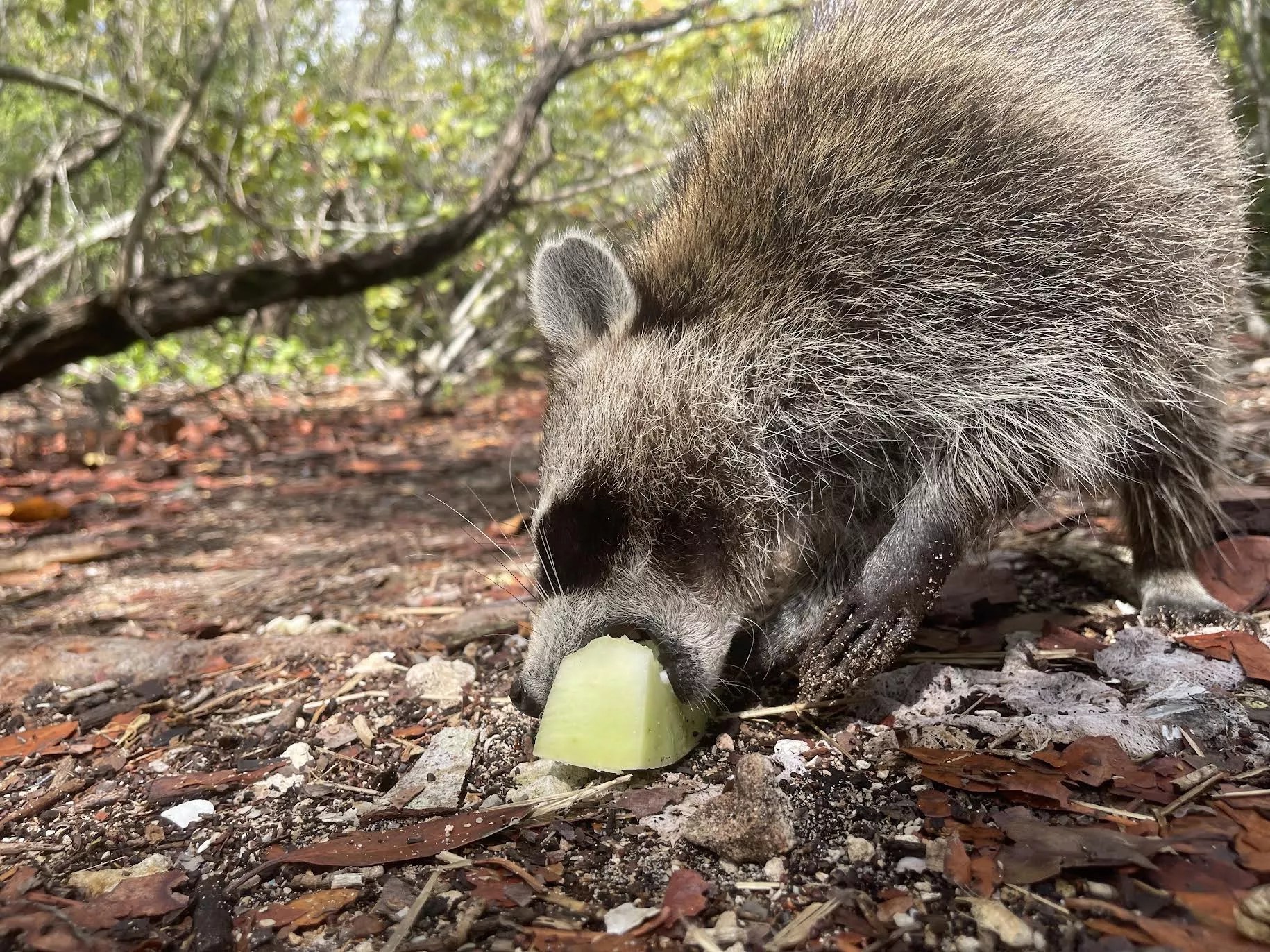
A polite raccoon snacks on honeydew melon on Raccoon Island.
Photo by B. Scott McLendon

Kayakers row through a tarpon tidal pool near Florida International University and on the way to Raccoon Island in Biscayne Bay.
Photo by B. Scott McLendon
Six raccoons came out for a slice, without the clamoring or impoliteness one might expect from wild animals. Each awaited their turn patiently yet eagerly, inspecting each piece that fell to the ground. If a piece gathered too much sand or debris, they would cast it aside and look to you with puppy-dog eyes, their tiny, human-like hands outstretched.
I wondered whether the exchange was as magical for the raccoons as it was for us mere humans.
There’s something undeniably enchanting about hand-feeding woodland creatures on a secluded island without natural predators. But that same exclusivity – the novelty that makes Raccoon Island so special – could also spell its downfall.
For humans, the experience is breathtaking. And, if we’re not careful, it could be for the raccoons, too.